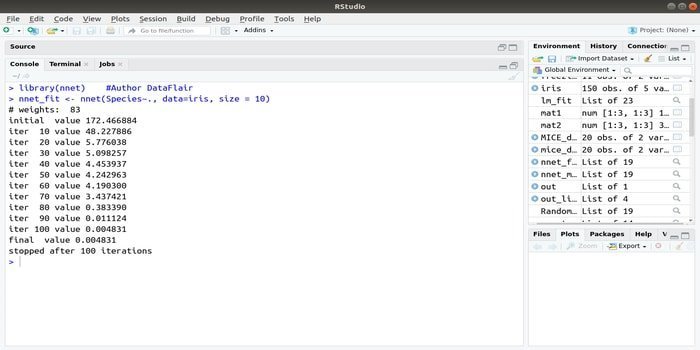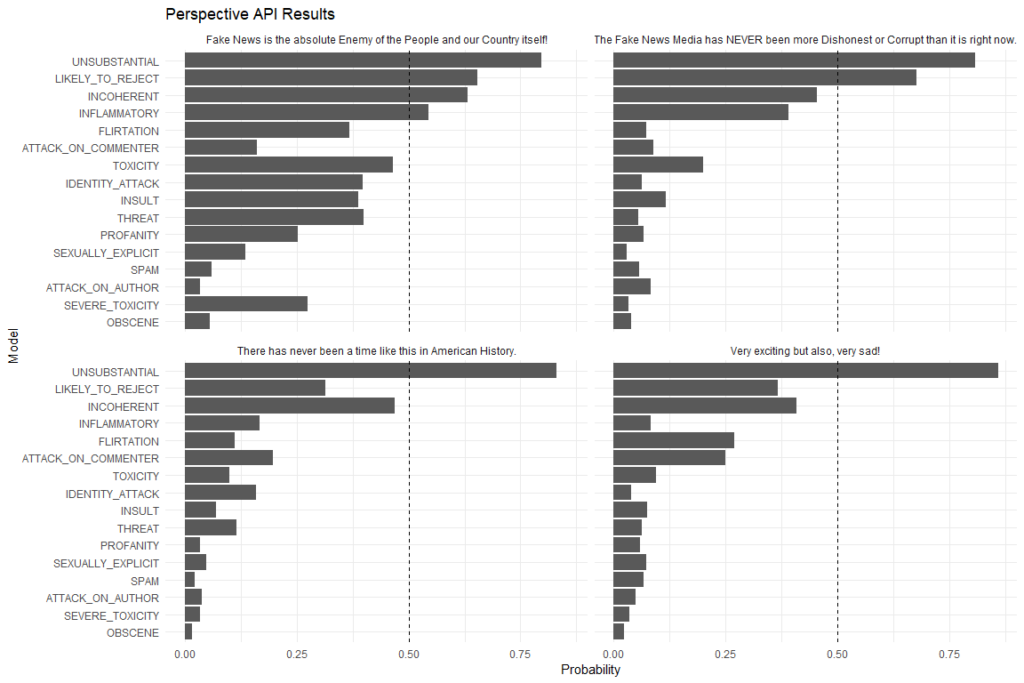R is among the commonest open source machine learning languages. Some other top ones are Python, Matlab, C++, JavaScript, Java, C#, Julia, Shell, TypeScript, and Scala.
an interesting thing is that your choice of language depends on preference and system requirements.
The following are what you can use R programming language for:
- Artificial Intelligence
- Data Science Projects
R Machine Learning Packages are known as collection of pre-written codes that are reuseable. They are identified as black boxes in R.
In this article, we have come with 21 interesting and top R machine learning packages for you.
1. randomForest
This package can be used to produce multiple numbers of decision trees. It is one of the commonest R machine learning packages. randomForest(formula=, data=) is the syntax of this function.

Features:
- You can use it to solve classification tasks and regression
- Missing values and outliers can be trained using randomForest
2. Rpart
Recursive Partitioning and Regression Training are what come together to form the word Rpart. Binary tree is displayed in the output and plot () function is what is used in plotting the result of output. Although, prp () function is more preferable to plot () function because of its flexibility and capability.

Features:
- It can be used for both classification and regression
- The syntax of function rpart() used to create a relationship between independent and dependent variables is: rpart(formula, data=, method=,control=)
3. Carat
Carat is fully known as classification and regression training. It is one of the best for both machine learning and data science. The grid search method of this package can be used to calculate the overall performance of a given model by justing integrating several functions.

Features:
- It integrates the training and prediction of a model
- The syntax of the train() function used by Carat is: train(formula, data, method)
4. e1071
This package is commonly known as one of the best for machine learning.

Features:
- Fuzzy Clustering, Support vector machines, Naïve Bayes classifier, etc. are used by this package to perform machine learning algorithms
5. nnet
This is one of the most common R machine learning packages. One good thing about this package is the fact it’s very easy to implement but comprises just a layer of nodes.

Features:
- This package provides help one way or the other in the development of machine learning application through the use of artificial neutral network (ANN)
- This package’s syntax is: nnet(formula, data, size)
6. KernLab
This R machine language package can be used for SVM (Support Vector Machine), kernel feature analysis, ranking algorithm, dot product primitives, Gaussian process, etc.

Features:
- A very few Kernel functions: Some kernel functions are mentioned here: polydot (polynomial kernel function), tanhdot (hyperbolic tangent kernel Function), laplacedot (laplacian kernel function), etc
- It is customizable in the sense that users can use their own kernel functions instead of the predefined ones
- Kernel functions can be used to perform Patten recognition problems
7. WordCloud
WordCloud is all about a single image having thousands of words. It is known as the visualization of data text.

Features:
- It is customizable, as you can have it to your taste
- You need two libraries, WordCloud and WordCould 2, before you can create a WordCloud
8. tm
This R machine learning package is known as time mining. Time mining tasks are solved by the framework provided by this package.

Features:
- It consists of removeNumbers() function: for removing Numbers from the given text document
- It also consists of weightTfIdf() function: for term Frequency and inverse document frequency
- It has tm_reduce() function: for joining transformations
- It comprises removePunctuation() function: for removing punctuation marks from the given text document, etc.
9. MICE Package
This R machine learning package is refered to as Multivariate Imputation via Chained Sequences. Mice package can be used to impute the missing values of machine learning dataset via multiple techniques.

Features:
- Some very few important MICE packages are: inspect missing data patterns, diagnosis of the quality of imputed values, analyses completed dataset, store and export imputed data in various formats, etc.
10. mlr
mlr is a fantastic R machine learning package. This package allows you to perform many machine learning tasks with just a single package.

Features:
- You need install.packages(“mlr”) and library(mlr) to install and load this package respectively
- It serves as a connection between several classification and regression techniques
11. Arules
This R machine learning package is extensively used as you can perform many operations on it.

Features:
- It performs the representation and transaction analysis of data, patterns and data manipulation.
12. mboot
This R machine learning package is mostly used for data relating to science. It is known as a model-based boosting package.

Features:
- Interaction model is made available by mboot to potentially high-dimensional data
13. Party
This R machine learning package can be used for recursive Partitioning. It is known as a computational toolbox.

Features:
- Ctree() is the key function of this package and it syntax is ctree(formula,data)
14. Parsnip
This R machine learning package works in a similar way to mlr. Parsnip can be used to sort out linear regression problems.

Features:
- It takes away the problem of referring to multi-packages for a certain machine learning algorithm
15. Ranger
This is one of the most loved R machine learning packages. No one loves slow computation of packages, Ranger does computation in a very fast way.

Features:
- Through the use of this package, you can quickly create large lots of trees in limited time
16. Purr
Purr is the widely known R machine learning package you can use to run your linear regression model on many different parts of data and it can also compute the evaluation metrics for each model.

Features:
- glm (generalized linear models) can be built using this package for different data pieces and compute p-values for every feature in form of a list
17. EIX
EIX is included in DrWhy.AI universe. The DrWhy.AI family of models are into four classes: Model adapters, Model agnostic explainers, Model specific explainers and Automated exploration. EIX happens to be in Model specific explainers.

Features:
- EIX has functions for displaying tree-based ensembles models, identifying interactions and measuring variable importance
- It also has functions for evaluating the structure and explaining interactions in XGBoost and LightGBM models
18. OTclust
OTcust is another very important R machine learning package. It versatility and uses make it unique.

Features:
- Through Optimal Transport Alignment, it provides mean partition for ensemble clustering
- It also offers uncertainty measures for both partition-wise and cluster-wise assessment
- OTcust provides multiple visualization functions to display uncertainty.
19. PeRspective
The R machine learning package is an interface to the “perspective” API.

Features:
- The “Perspective” API make use of machine learning models for scoring the perceived impact a comment might have on a conversation (i.e. TOXICITY, INFLAMMATORY, etc.)
20. SelectBoost
It brings about SelectBoost algorithm to enhance how variable selection methods performed in correlated data sets.

Features:
- The algorithm used here depends on highly intensive simulations and record the correlation structure of the data.
21. spectralGraphTopology
This R machine learning package is best suitable for learning graphs from data.

Features:
- Open Source
- It brings about block coordinate descent estimators for learning k-component, bipartite, and k-component bipartite graphs from data through imposing spectral constraints on the eigenvalues and eigenvectors of the Laplacian and adjacency matrices
Conclusion
R programming language is very important in statistical methods and graphs to explore data. It has numerous packages you can choose from to build avdanced machine learning projects, some very common R machine learning packages are explained above.


